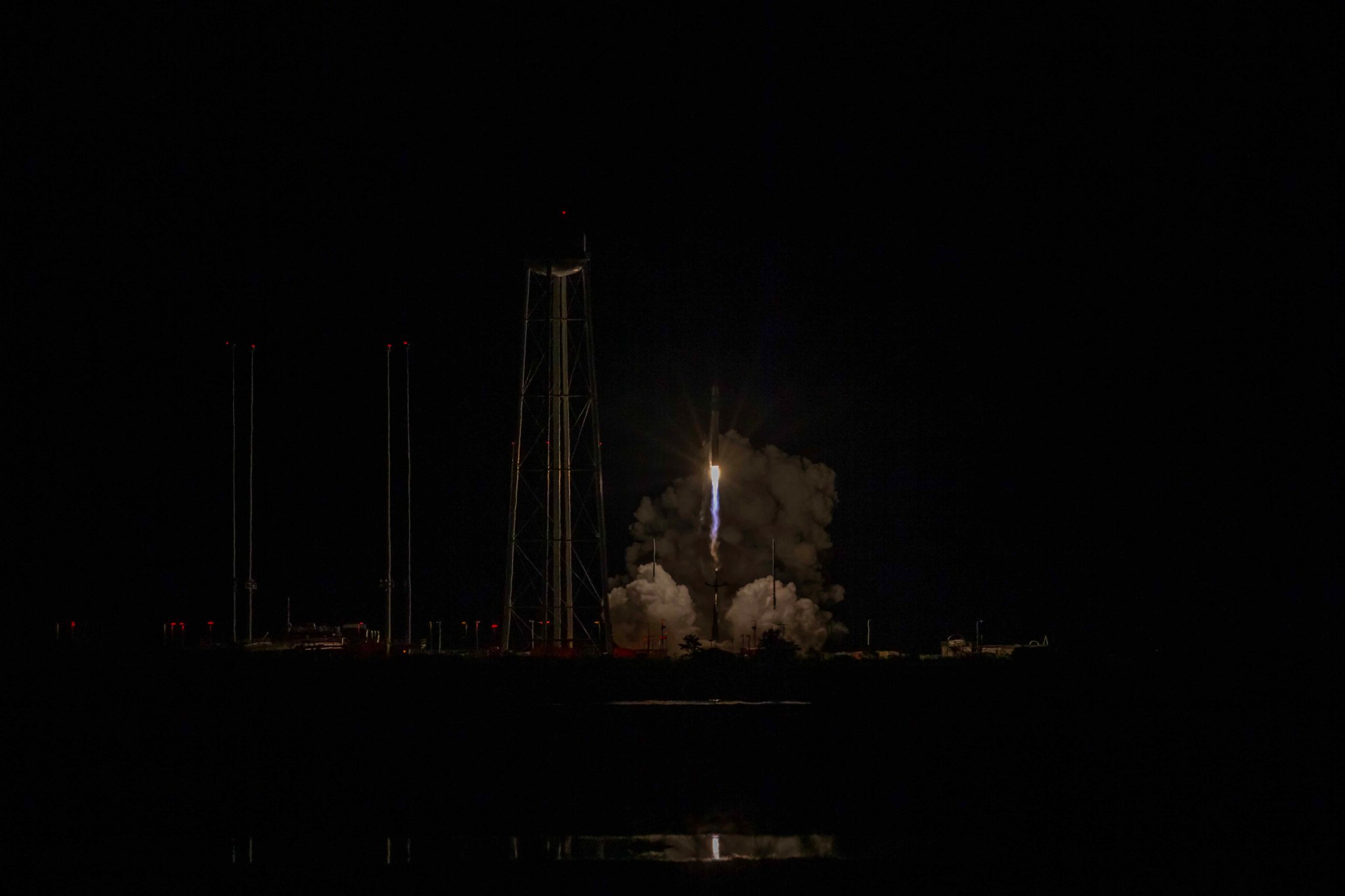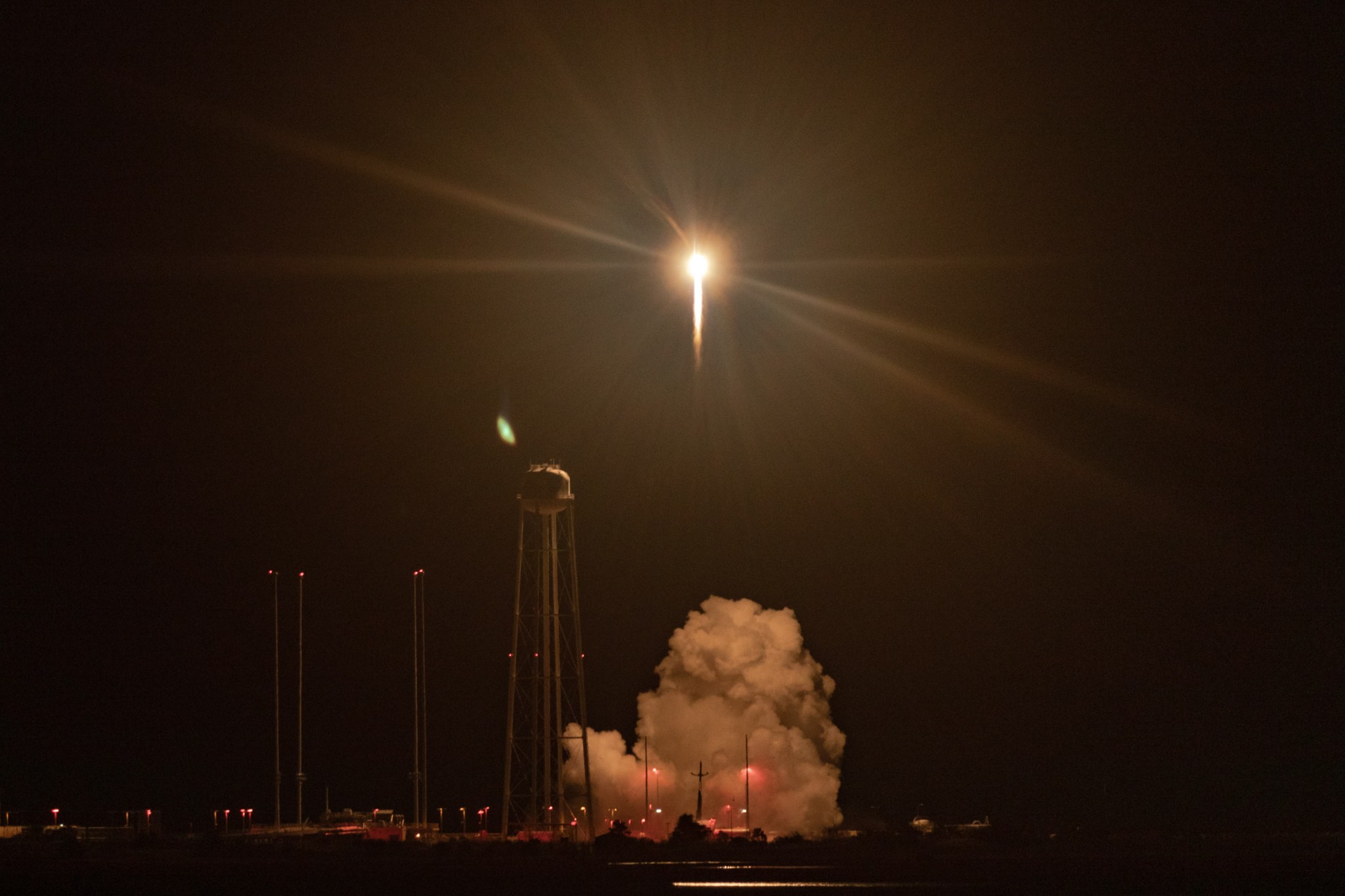
A revolutionary NASA flight safety system has enabled a new era of space transportation with the successful flight of Rocket Lab USA’s Electron rocket Jan. 24, from NASA’s Wallops Flight Facility in Virginia.
This mission, the first Electron launch from the United States, was enabled by NASA’s work in developing the NASA Autonomous Flight Termination Unit (NAFTU), a critical piece of flight safety technology required for this mission. Tuesday’s launch was the first-ever flight of the NAFTU flight safety system.
With NASA providing command and control of the Wallops Launch Range, Electron launched at 6 p.m. EST, Jan. 24, from the company’s Launch Complex-2 within Virginia Space’s Mid-Atlantic Regional Spaceport on NASA’s Wallops Island.
“In taking NAFTU across the finish line, NASA has delivered an autonomous flight termination system like no other in operation today filling a critical gap in modernizing our nation’s launch ranges,” said David L. Pierce, Wallops Flight Facility director. “We’re proud to have made this and future U.S. Rocket Lab Electron launches possible with our game-changing flight safety technology.”
While other, proprietary autonomous flight termination systems are in use today, NAFTU is different in that it was designed to be used by any launch provider at all U.S. launch ranges to ensure public safety during launch operations. To date, 18 companies have requested the NAFTU software through NASA’s technology transfer process. Rocket Lab was among the first applicants for the software, enabling their launch from Wallops.
Ensuring public safety is the primary mandate of any launch range. Launches flying without automated flight safety systems rely on range safety officers to monitor all stages of rocket flight using ground-based tracking and telemetry assets. If the rocket flies off course, the range safety officers send commands to terminate flight. Launch safety plans need to compensate for human reaction time.

In taking NAFTU across the finish line, NASA has delivered an autonomous flight termination system like no other in operation today filling a critical gap in modernizing our nation’s launch ranges.

dave pierce
NASA's Wallops Flight Facility Director
In contrast, an automated flight safety system, such as NAFTU, is an independent, self-contained flight termination system mounted on a rocket to make real-time flight termination decisions autonomously. This real-time decision-making capability provides many benefits, such as wider launch windows and smaller downrange safety corridors for boats and aircraft. In addition, since the unit is self-contained and mounted on the rocket, there is a significantly reduced need for ground-based tracking and telemetry systems, which reduces overall operations and maintenance costs. These savings are, in-turn, passed on to launch providers.
“Launch tempos are increasing at all our nation’s launch ranges, while ground-based assets required for launch are getting increasingly expensive to maintain,” said Pierce. “Many of these issues are mitigated through the benefits of autonomous flight safety systems like NAFTU.”
Wallops, in collaboration with NASA Headquarters, NASA’s Kennedy Space Center, the U.S. Air Force and Space Force, as well as the Federal Aviation Administration, began development of NAFTU in 2020, when the program became fully funded. Provisional certification of the unit was granted for Rocket Lab’s first U.S. Electron mission and full certification is expected by Jan. 31, 2023.
NASA’s Wallops Flight Facility provides agile, low-cost flight and launch range services to meet government and commercial sector needs for accessing flight regimes worldwide from the Earth’s surface to the Moon and beyond. Wallops’ flight assets ranging from research aircraft, unmanned aerial systems, and high-altitude balloons to suborbital and orbital rockets – provide a dynamic range of flight capabilities. In addition, operational launch range and airfield assets at the facility enable science, aerospace, defense, and industry sectors.
NASA’s Technology Transfer Program, managed by STMD, ensures that technologies developed for missions in exploration and discovery are broadly available to the public, maximizing the benefit to the nation. Learn more by visiting the Technology Transfer Portal at: https://technology.nasa.gov
Jeremy Eggers
NASA’s Wallops Flight Facility, Wallops Island, VA.
jeremy.l.eggers@nasa.gov





























